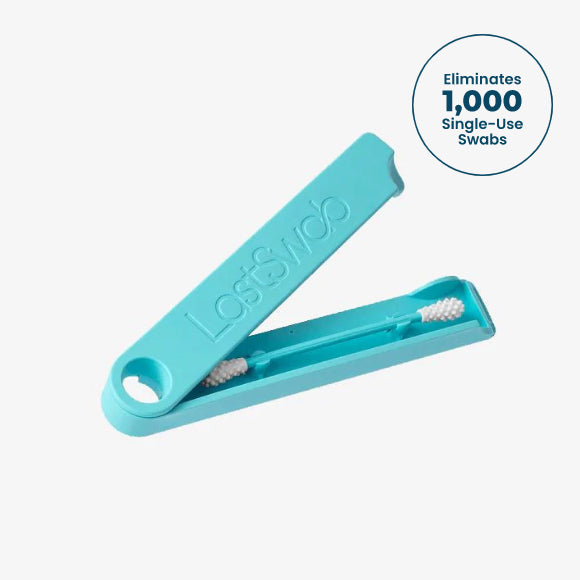How LastSwab's Plant Based Plastic Case is Made
29 Mai, 2020Plant based plastics are pretty dang cool. They do away with the need for petroleum and other unsustainable materials🛢And once they break down, they won’t leach any toxins into the environment since they are made from simple plants!
While certainly not perfect, plant based plastics are a huge step away from our dependence on fossil fuels and petroleum based materials. We are proud to say that LastSwab’s case is made from plants, specifically corn.

While very exciting, it’s tough to imagine how something can go from corn to a full on plastic material. Other than maybe picturing some wizard snap his fingers and boom! No? Just me?
Well you no longer have to imagine, because we are going to take you through the process from corn to case!
The Process
Our corn is grown in the 🇺🇸United States where it is transformed into a usable material and then exported to us for manufacturing.
As one would probably assume, a plant like corn has to undergo several steps in a process in order to be used as a plastic.
Our process can be divided into five steps:
- Extracting the material
- Fermentation
- Intermediate product
- Polymerization
- Polymer modification
And in case these words are totally confusing, let’s get into what that process looks like.
Step 1: extracting the material
The corn stalk is crushed which allows the starch to be extracted and processed into glucose. Mmmmmm sweet like candy!
Step 2: fermentation

Much like beer or alcohol, the glucose undergoes a fermentation process which turns into lactic acid.
Step 3: intermediate product
The lactic acid is then converted into an intermediate product through a specific concentration process. This process creates water reducing lactic acid, otherwise known as lactide.
Step 4: polymerization
After the lactide monomer is vacuum purified, the action is completed by a solvent free dissolution process which polymerizes the monomers. Polymer is a fancy word for a complex chain of molecules. This is required to form a solid or liquid material.
Step 5: polymer modification
Because polymers can be made into many materials, it is important they be altered to suit the needs of products that they will be made into. This means, a polymer will be modified differently for something like LastSwab’s case vs something like a disposable PLA cup.
As we can see, a big process goes into converting corn into plastic. This is why using these materials for reusable items has an even more positive impact. A single use plastic made from corn is of course better than single use plastic made from petroleum, but it will still have unnecessary impact since it has to be created then thrown out over and over again.
Not only is a reusable PLA plastic non toxic and independent from petroleum, the smaller footprint it has will be spread out over many uses instead of one.

For many, we may be able to wrap our heads around the idea that every product requires resources to make. But sometimes it’s nice to understand the processes involved so that we can better appreciate the amazing inventions such as plant based plastic.
A process that is both greener in its resources and in its manufacturing.
MORE LastObject News ARTICLES View all ›
Ready to make
the switch?
- Powerful Cleaning
- Dissolves Easily
- Skin-Friendly
- Eco-Friendly
- No Mess















